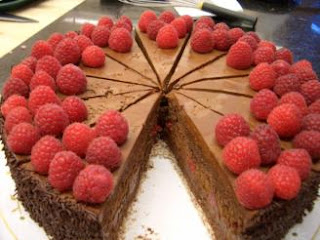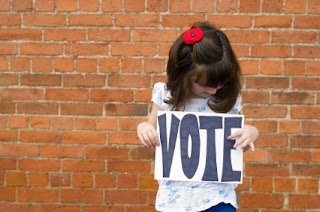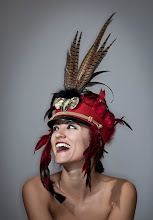What disappoints me most about the child I was, is that the woman I have become quite likes maths and science. Why didn’t I pay more attention in school? I could have been a contender. Back when my brain was a sponge and I was receiving a free education, why didn’t I absorb all the wonderful things I was being taught, instead of spending all my time trying to subtly turn my shoe upside down so I could play with the puzzle Clarks had built into the sole?
A new report has revealed that half of working age adults - that’s 17 million people in the UK - have the numeracy skills of a primary school child. I think I can stand up and be counted in that statistic.
There’s a lovely anecdote in Ben Miller’s It’s not rocket science (that’s me trying to claw back an education) where he pays homage to his maths teacher at primary school, Mr Bailey, who taught the kids that times tables were fun - something for which you needed a tables license, which Mr Bailey painstakingly made himself using a signature, a counter signature and a photo of said pupil.
He’d issue the license to any pupil who could prove they really did know their tables. And as if to illustrate just what a gifted teacher Mr Bailey was, every child in the top stream for maths at the secondary school Ben Miller went to had come from Mr Bailey’s primary school maths class.
Sadly I had no such Mr Bailey.
Mrs Geary taught me that if you run the cold tap over your wrist you can control a hot flush. Quite why I needed to know that, I don’t know, but it’ll come in handy when I hit the menopause.
Mrs Tew taught me that the six most important words in a relationship are ‘I am sorry, I was wrong.’ But I haven’t mentioned that one to my husband.
And Miss Dick taught me what to do if someone has a heart attack. By pretending to have a heart attack. It was terrifying, but certainly sunk the info into the old psyche.
I remember being very jealous of the kids in Mrs Tatler’s class, who told me they’d learned about division by cutting a cake in half. Then quarters. Then eights. Then they ate it. Not fair.
Aside from that, not really sure what else I learned. After reading Ben Miller’s lovely tables license anecdote, I started testing myself on my tables and I definitely get a bit rusty around the 8s and above.
Maybe I need this. I do like owls...
Maths needs to be more fun. Schools need to take the anxiety out of it and make it enjoyable - cutting up cakes, for example.
As regular readers will know, maths and anxiety go hand in multiplying hand for me. The very man who would have so loved me to be as swift with my long multiplication as he was, was the very same man who has filled my internal calculator with anxiety instead of mental arithmetic. That’d be you, Dad.
It was his sheer frustration at the fact I clearly wasn’t turning out to be a genius which shut my brain down around maths to the point that I didn’t even bat an eyelid when, after a few months running my own business, I calculated that I’d made £200,000. I just thought I’d been doing quite well, until my husband pointed out I’d somehow added two extra zeros. And I’ve been doing my own accounts ever since.
Being this crap at maths does have upsides though. It means I still need my dad, which I think he secretly likes. Like the time I was writing a feature about a woman who had three children born on the same day, years apart. I needed a statistic for the chances of that happening and had found something online which seemed about right.
Roger Heath-Brown, professor of Pure Mathematics at Oxford University, said the odds of the couple's children all being born on the same date were 48,627,125 to 1.
Not one to instantly trust the internet nor any professor of pure mathematics who isn’t my dad, I asked the old man for his verdict.
Turns out prof Heath-Brown had it all wrong.
‘The mathematical answer is 1:133225,’ Pops explained. ‘1 in 48 million is the figure for 3 children being born on a PARTICULAR date, as in saying to a not yet pregnant woman, 'you will have three children, and they will all be born on January 1st’ - a 1/365 chance, multiplied 3 times.
He continued: ‘The odds of three children being born on the same but unspecified day means actually that first one child was born (probability 1/1) then another was born on the same date (probability 1/365) and then another was born on the same date again (probability 1/365). Therefore the odds of 3 children being born on the same date is these 3 figures multiplied together. 1x365x365, which = 1/133,225.’
Still with me? He added for good measure: ‘In practice it would be less than 1:133225, because the parents might be more sexually active at a particular time of the year (like on holiday).’
It was a shame because my story would probably have sold for more if the chances were in fact 1 in 48 million, but I have to hand it to Dad, he is bloody good at maths. And even though we were now talking about parents having sex, which always leaves me stuffing cotton wool in my ears, we were bonding. Over maths. Which I suppose is what we’d do if I was a mathematical genius and we spent our time bantering about just how different the world would be if Pythagoras hadn’t come up with his theorem and testing each other to see who could remember the most digits in the never ending mathematical number Pi, rather than me just saying ‘that new film Life of Pi looks good’ and Dad wondering where it all went wrong.




































